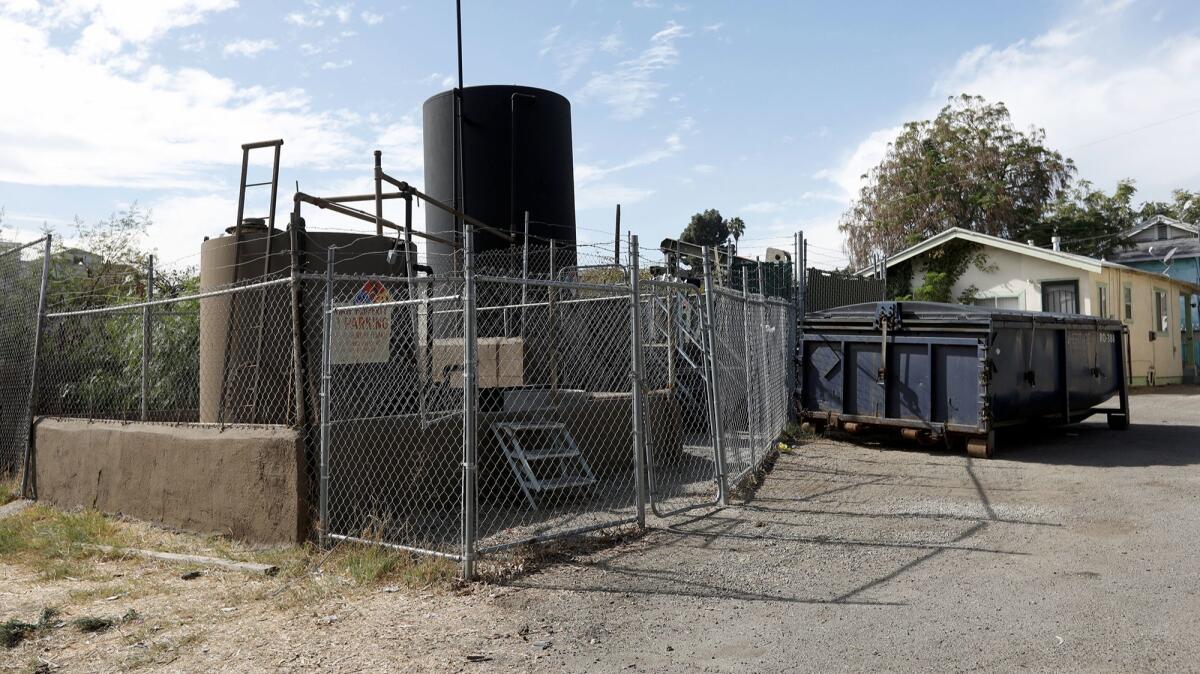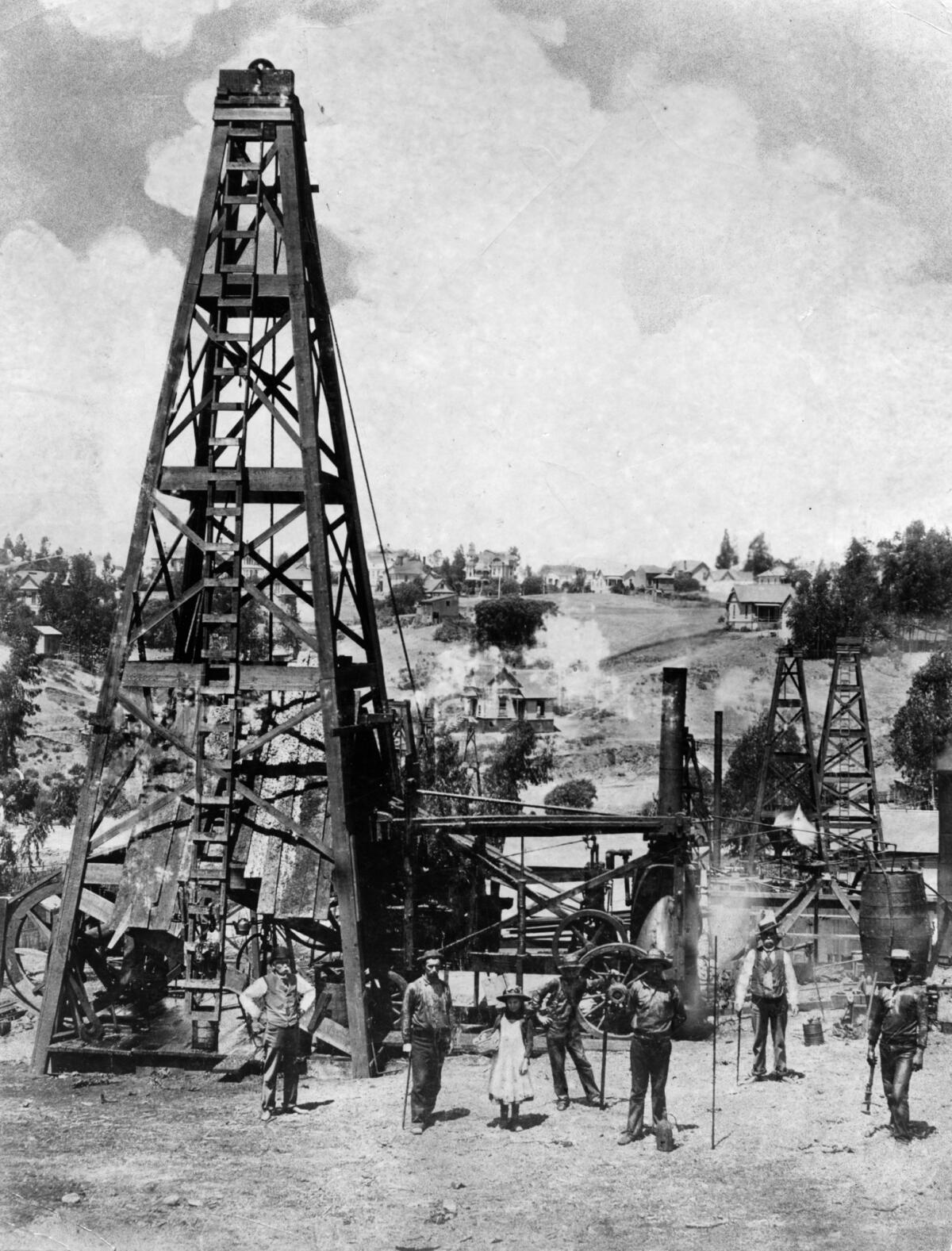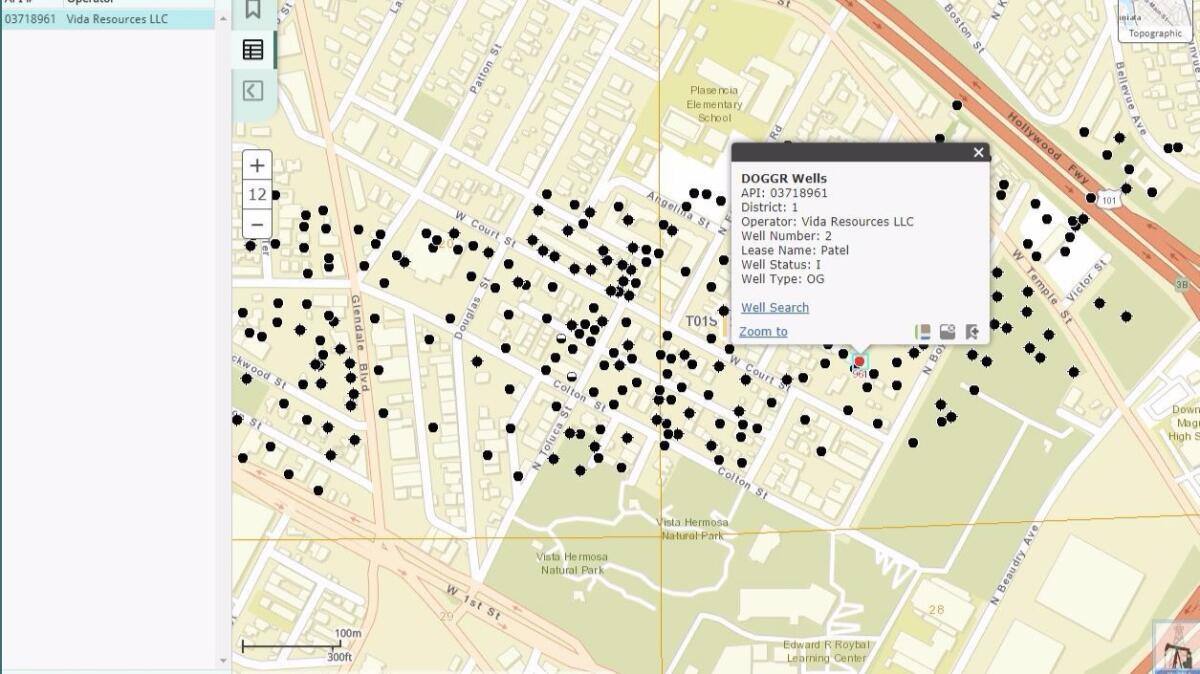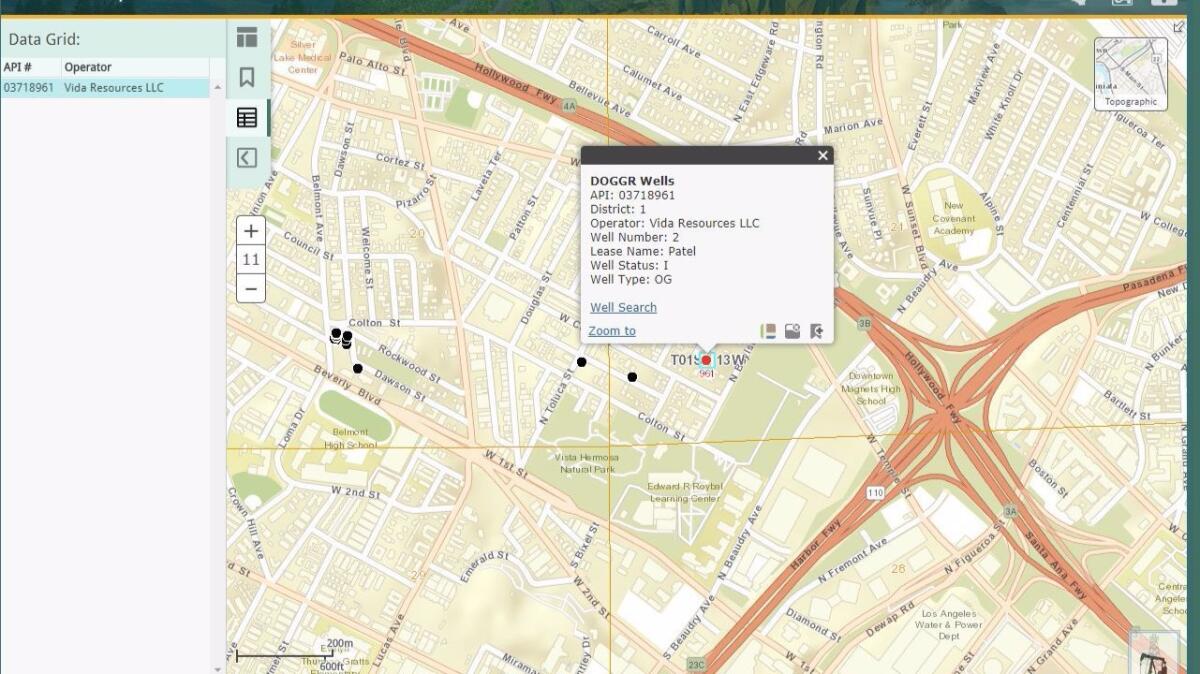Multiple agencies are investigating an oil spill a block from a downtown Los Angeles high school

State and local officials have launched a joint investigation after discovering more than 200 plastic bags filled with oil-soaked dirt they believe were about to be removed from the site of a leaky oil well in Echo Park.
City, county and state officials converged on the site just west of downtown this week after a spill, estimated to be from 20 to 40 barrels, was discovered Saturday.
A spokeswoman for the
The inspection Saturday was precipitated by a whistle-blower who told fire officials that the owner, Vida Resources LLC, was attempting to conceal a spill by covering the oil with dirt, LAFD spokesman Peter Sanders said.
Bags of contaminated dirt were mounded next to the well when inspectors arrived Monday, said Uduak-Joe Ntuk, head of the city Office of Petroleum and Gas Administration and Safety.
The cause of the leak, which was releasing oil into a block wall containment area around the grasshopper-style pump, had not been determined, Ntuk said. No oil escaped the containment area or threatened the nearby Edward R. Roybal Learning Center, but harmful gases may have been released into the atmosphere, he said.
Los Angeles County Fire Department’s Health Hazmat unit ordered Vida Resources to send the bags to a hazardous waste facility, said Fire Inspector Gustavo Medina. On Tuesday, the owner had moved the bags into a waste bin labeled hazardous waste, Medina said.
A spokesman for the California Division of Oil, Gas and Geothermal Resources said Tuesday that the agency is investigating but declined to specify what violations may be suspected.
“We are investigating and coordinating with sister agencies and do not want to jeopardize our or their investigation,” spokesman Don Drysdale said.
A spokeswoman for the Los Angeles Department of Public Works said Tuesday that the city’s watershed protection division is also involved in the investigation.
The well, at 413 Firmin St., is on a bluff overlooking the high school. It is one of the few wells still pumping crude from the Los Angeles City Oil Field, once one of the state’s most productive.
Vida Resources voluntarily shut the well down. The firm’s owner, Chaim Nathan, said he plans to abandon the well, which he said produces “very badly.”
“It’s very hard to continue pumping,” he said. “It’s not worth it. I don’t know where I’m going to end up with them, and all those regulations.”
Nathan said he thinks the city is trying to eliminate all the remaining wells.
“They win, they got it,” Nathan said. “It’s a shame. Our country needs oil and we have to abandon wells.”
State records show the well produced only 491 barrels of oil in 2016 and has not reported any production for 2017.

During the oil field’s peak years, at the turn of the 20th century, a forest of derricks stretched from just south of Dodger Stadium to Vermont Avenue. Records of the state oil and gas agency show that only three wells are still producing out of dozens that once dotted the hillside west of the high school.
Last year, the state oil and gas agency plugged and abandoned two nonproducing wells on Firmin Street that were found to be releasing methane and hydrogen sulfide gas. At that time, Vida Resources’ well was cited for violations that have since been corrected, Drysdale said.
Methane seeping from the oil field played a key role in the scandal-plagued construction of Los Angeles’ most expensive high school.
The school, then known as the Belmont Learning Complex, was conceived as a mixed-use project with commercial space under the school and would have broken a decades-long lapse in new school construction as the Los Angeles Unified School District struggled with overcrowding.
The $200-million project came to a halt in 1999 when The Times disclosed that school district officials failed to act on information that methane from the oil field could seep into classroom buildings.
With a new name, and after being partly demolished due to the discovery of an earthquake fault underneath the partially completed buildings, the high school was eventually completed with methane mitigation measures, at a cost of more than $400 million. It opened in 2008.


Sign up for Essential California
The most important California stories and recommendations in your inbox every morning.
You may occasionally receive promotional content from the Los Angeles Times.








